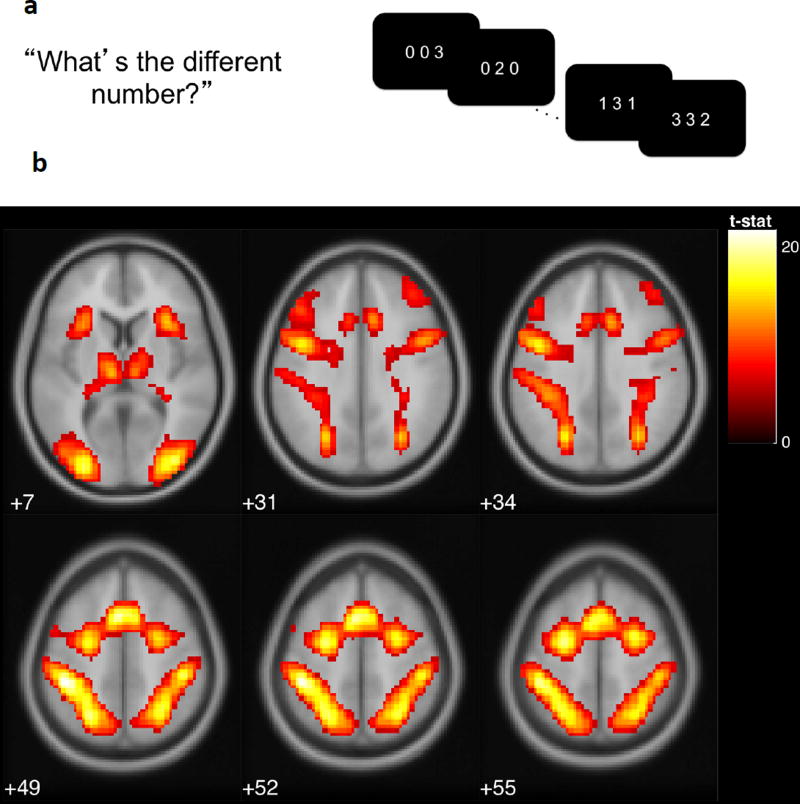Figure 1.
a) In the multi-source interference task (MSIT), adolescents were asked to identify the digit that differed from two other concurrently presented digits, ignoring its position in the sequence. b) Adolescents exhibited greater activation for interference relative to neutral conditions in the regions of left posterior-medial frontal cortex, left and right inferior frontal gyrus, left and right inferior parietal lobules, right insula, right superior frontal gyrus, and left middle frontal gyrus, displayed at p(FWE) < .001 (see Table 1). Reprinted from [citation blinded].

